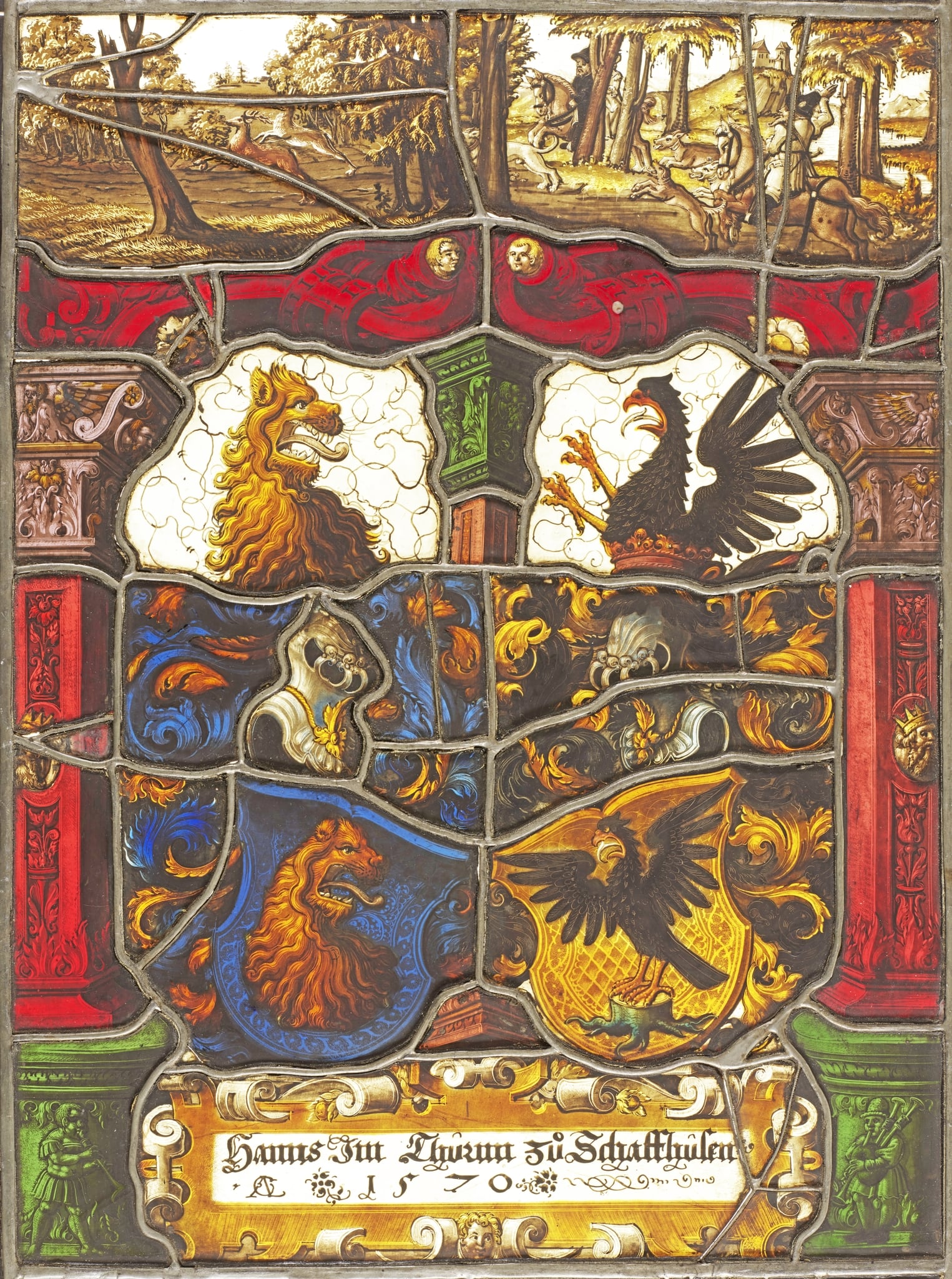The monogram of Hieronymus Lang the Elder (1520–1582) is found to the left of the date on the inscription plate. He was a highly influential individual and the founder of four generation of glass painters, profiled by Rolf Hasler. A comparison for date and composition is found in the Marriage Panel of Hans Ulrich Stokar and Elsbeth von Goldenberg (Gemeindehaus Unterstammheim; Hasler, 2010, p. 102, fig. 74). Unterstammheim is 10 kilometers (six miles) southeast of Schaffhausen. The inscription plate giving the date of 1572 was created during a restoration in 1876. The original sketch is dated 1569 (Schaffhausen, Museum zur Allerheiligen; Hasler, 2010, p. 102, fig. 75). The Unterstammheim panel, representing another member of the Stokar family, might also have been instrumental in Hans Im Thurn-Stokar’s decision to commission Lang. Subtly graded washes are favored over hatching and stickwork is also focused on clear delineation of contour, perhaps best observable for the Baltimore panel in the baroque ornamentation of the inscription cartouche. Lang’s vivid depiction of landscape, a quality that was a hallmark of his style, is evident in the foliage and ground in the upper panel.
Hans Im Thurn (1535–1611) and Margaretha Stokar (1544–1598) were members of patrician families of Schaffhausen. The hunting scene at the top reflects the privilege of the hunt enjoyed by this social class. Mounted riders with a pack of hounds pursue deer through a wooded area. Hans held many offices including that of Reichsvogt or Imperial Governor. The couple had five sons and three daughters. Hans expanded a family residence, that took the name of Thayngen Castle, to become the new seat of the Schaffhausen bailiff and his personal summer residence between 1593 and 1604. In 1615 his son and also mayor of Schaffhausen, Hans Im Thurn-Peyer (1579–1648) expanded the building to include a northern extension (Frauenfelder, 1960). The arms of Im Thurn and Stokar also appear in the epitaph in stone on the wall of the Dormitorium of the Benedictine Monastery of Allerheiligen, Schaffhausen.
Schaffhausen is located in the northernmost canton of Switzerland, bordering with Germany. In actuality, its territory is divided into three unequal isolated portions by Germany. The town of Schaffhausen, its capital, is the largest urban area, close to the border of the Canton of Zurich; it is linked to the Rhine by a short segment of the Durach river. Stein-am-Rhine is further to the east, barely fifteen miles from the city of Constance which is perched on the important inland waterway Lake Constance. The Rhine, flowing from Lake Constance, acts as a southern border to the Canton. Thus, commerce with German as well as Swiss clients was an integral part of the artistic and mercantile exchanges in the region.
Cited in:
Hayward, J., Kummer-Rothenhäusler, S. and Raguin,V. (1987) p. 65.
Hayward, J., Kummer-Rothenhäusler, S. and Raguin,V. (1989) p. 310.
